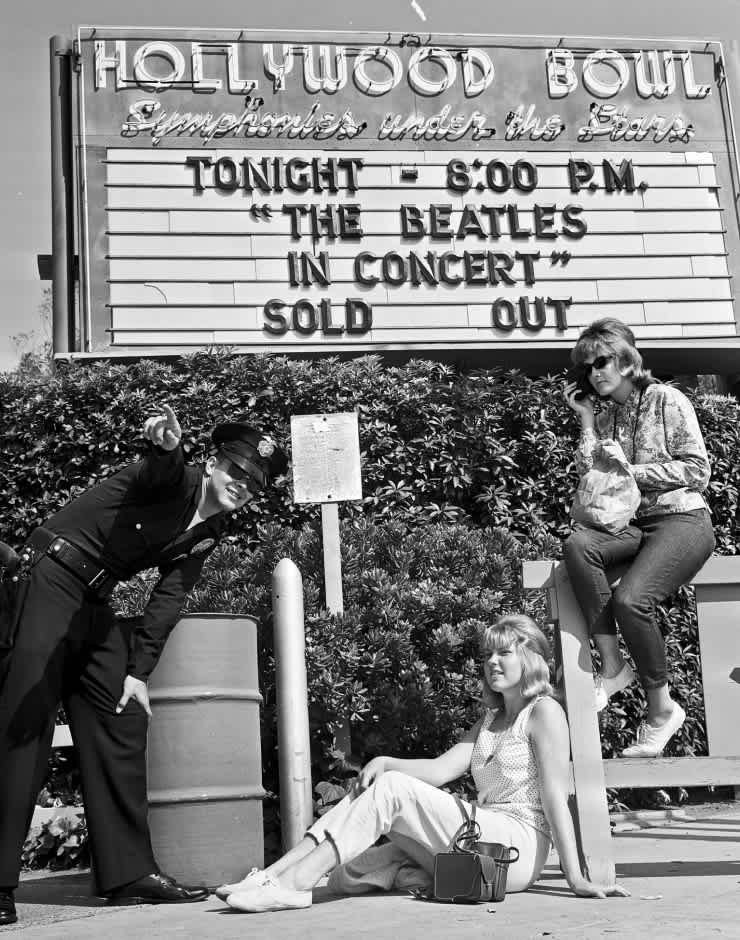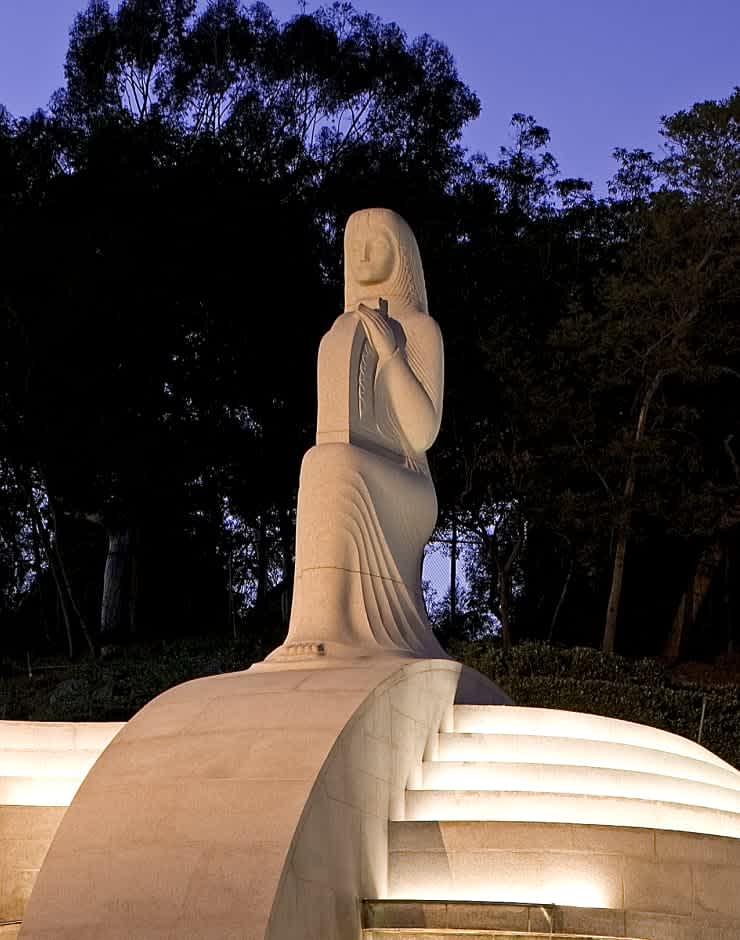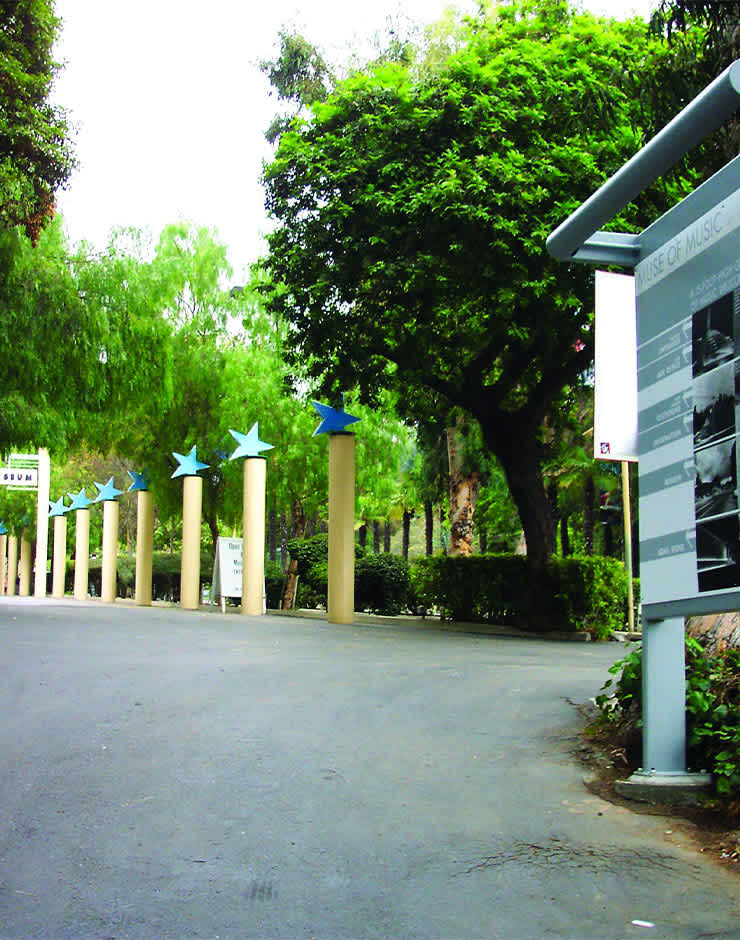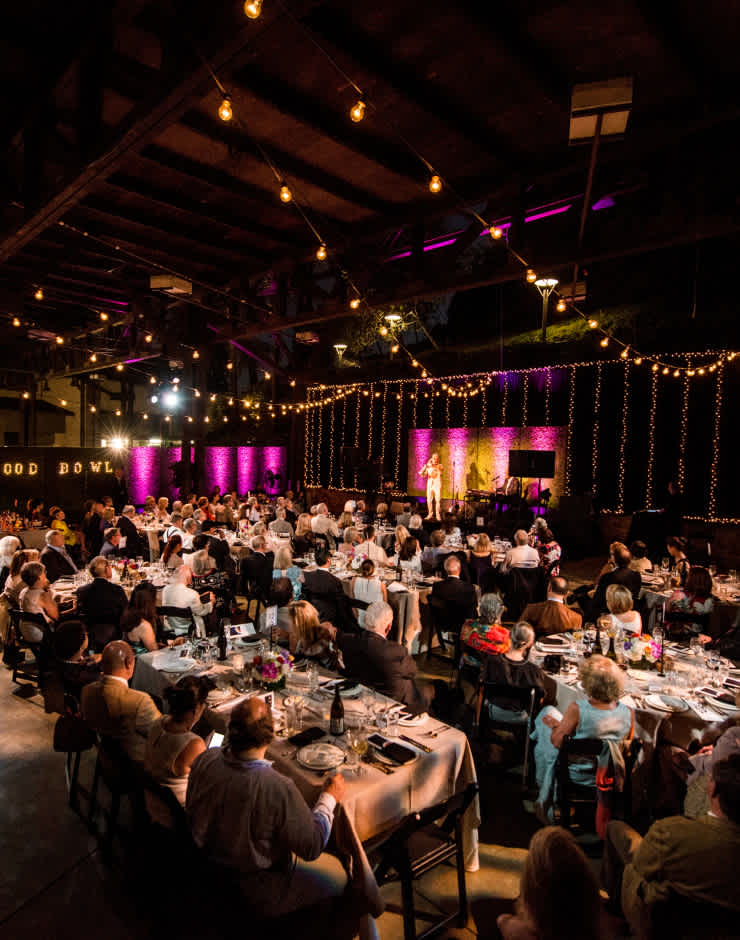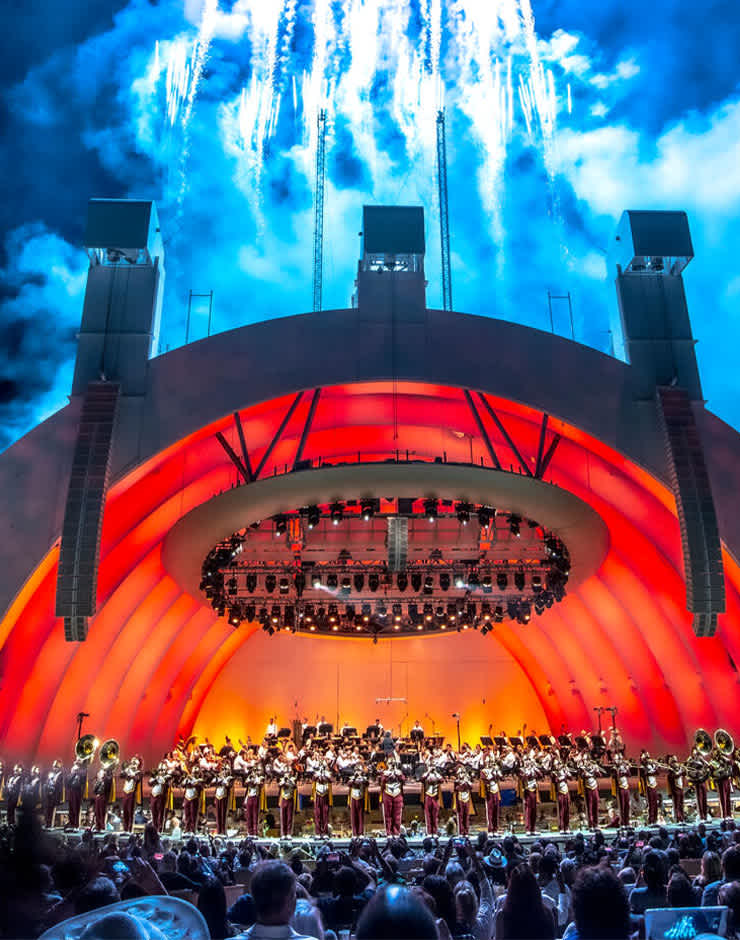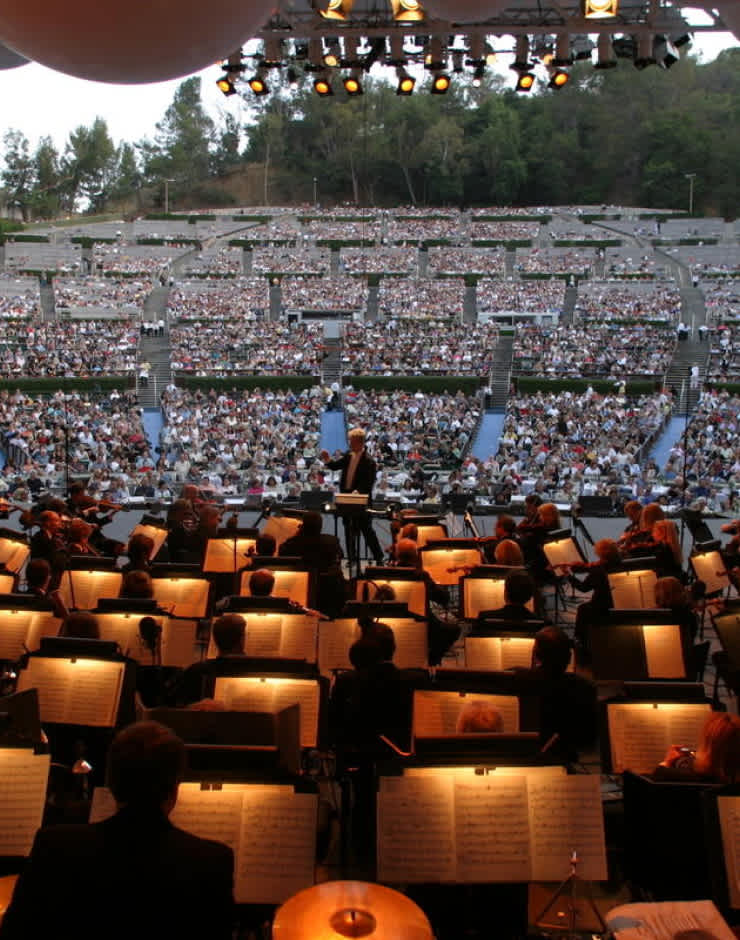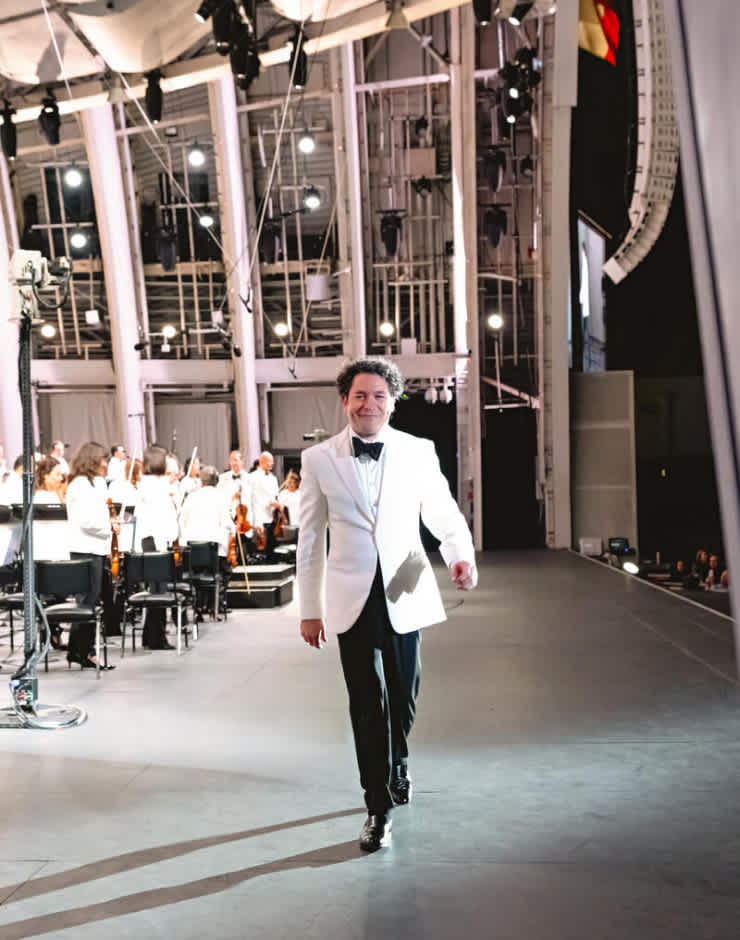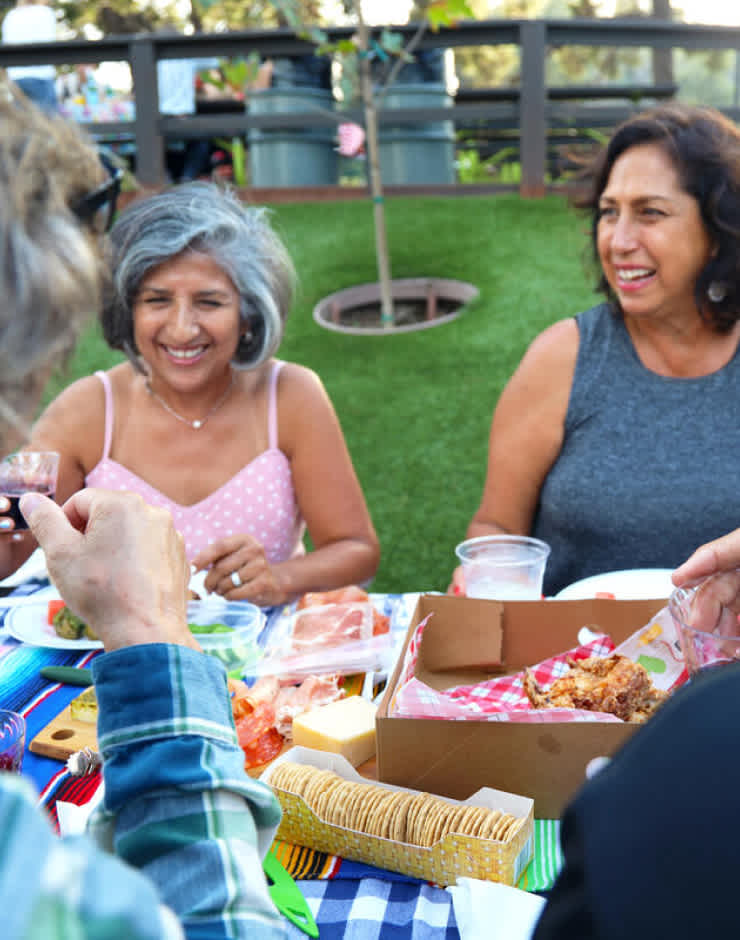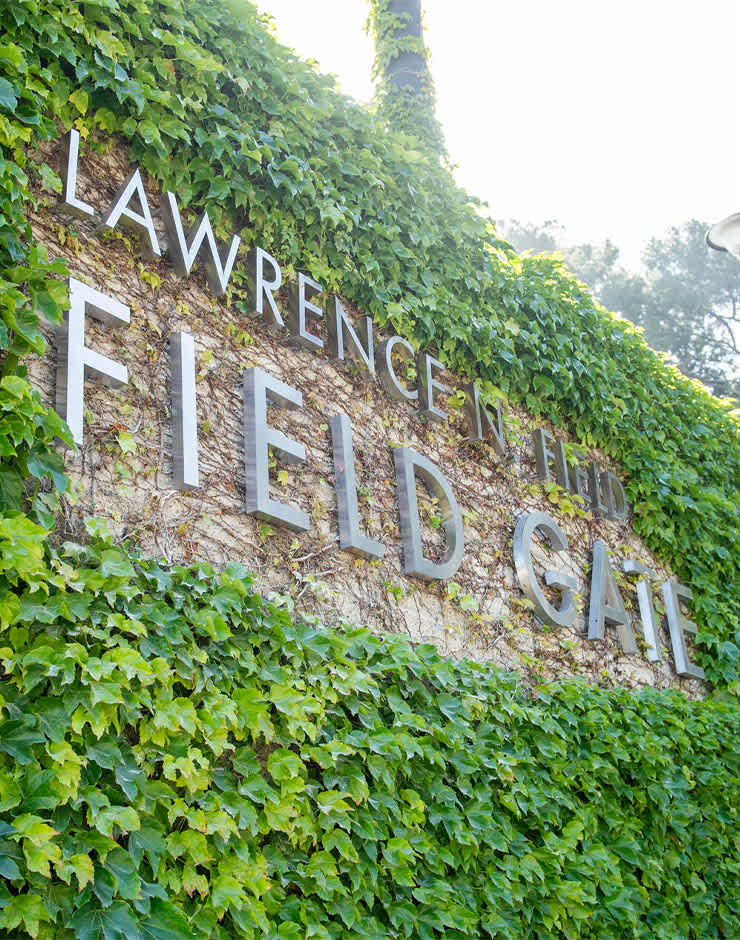The First 000 Years
Presented by
Explore Episodes
![The Marquee]()
Play Episode
Episode 1 | 9:26
MARQUEE
Seeing your name on the Hollywood Bowl marquee is one of the milestones signaling you...
![Muse of music]()
Play Episode
Episode 2 | 7:21
MUSE OF MUSIC
Born of the Great Depression and nearly lost to disrepair, the fountain complex has s...
![Episode cover]()
Play Episode
Episode 3 | 7:28
PEPPER TREE LANE
Pepper Tree Lane—the walkway that transports you to the Bowl—is named for the trees t...
![Tea Room]()
Play Episode
Episode 4 | 5:35
TEA ROOM
For decades, the Hollywood Bowl’s tea room and gardens were a gathering place as mean...
![Hollywood Bowl Shells]()
Play Episode
Episode 5 | 7:37
HOLLYWOOD BOWL SHELLS
From controversial choice to celebrated symbol, the Hollywood Bowl’s historic shells ...
![The Pool Circle]()
Play Episode
Episode 6 | 6:06
POOL CIRCLE
Of all the experiments in the Bowl design over the last century, none has inspired mo...
![SEATING AREA]()
Play Episode
Episode 7 | 8:22
SEATING AREA
Whether you prefer a box or a bench, the Hollywood Bowl experience has been a beloved...
![Backstage]()
Play Episode
Episode 8 | 7:33
BACKSTAGE
Before the current shell was installed in 2004, backstage at the Bowl was more greene...
![The Park]()
Play Episode
Episode 9 | 8:46
THE PARK
The Hollywood Bowl is an 88-acre Los Angeles County Park, filled with picturesque hid...
![]()
Play Episode
Episode 10 | 12:13
NAMED SPACES
Only a handful of truly devoted Bowl fans have been honored with a space named after ...
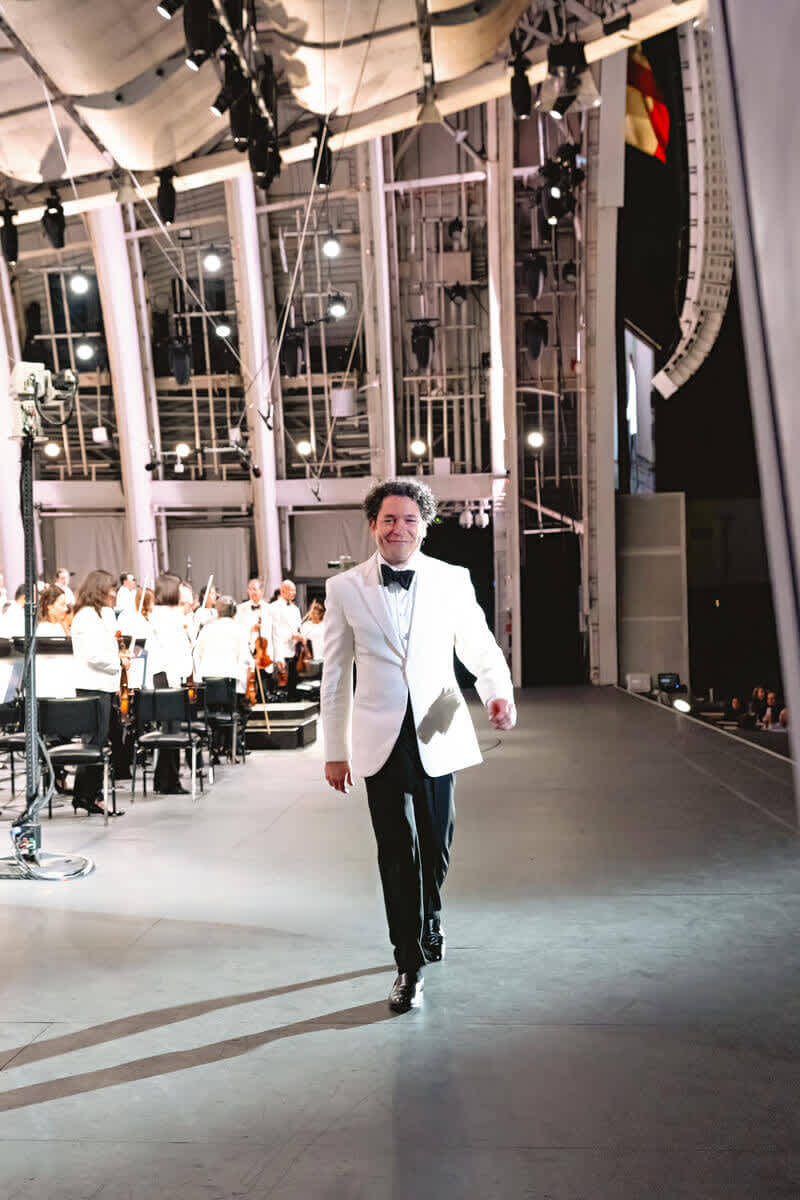
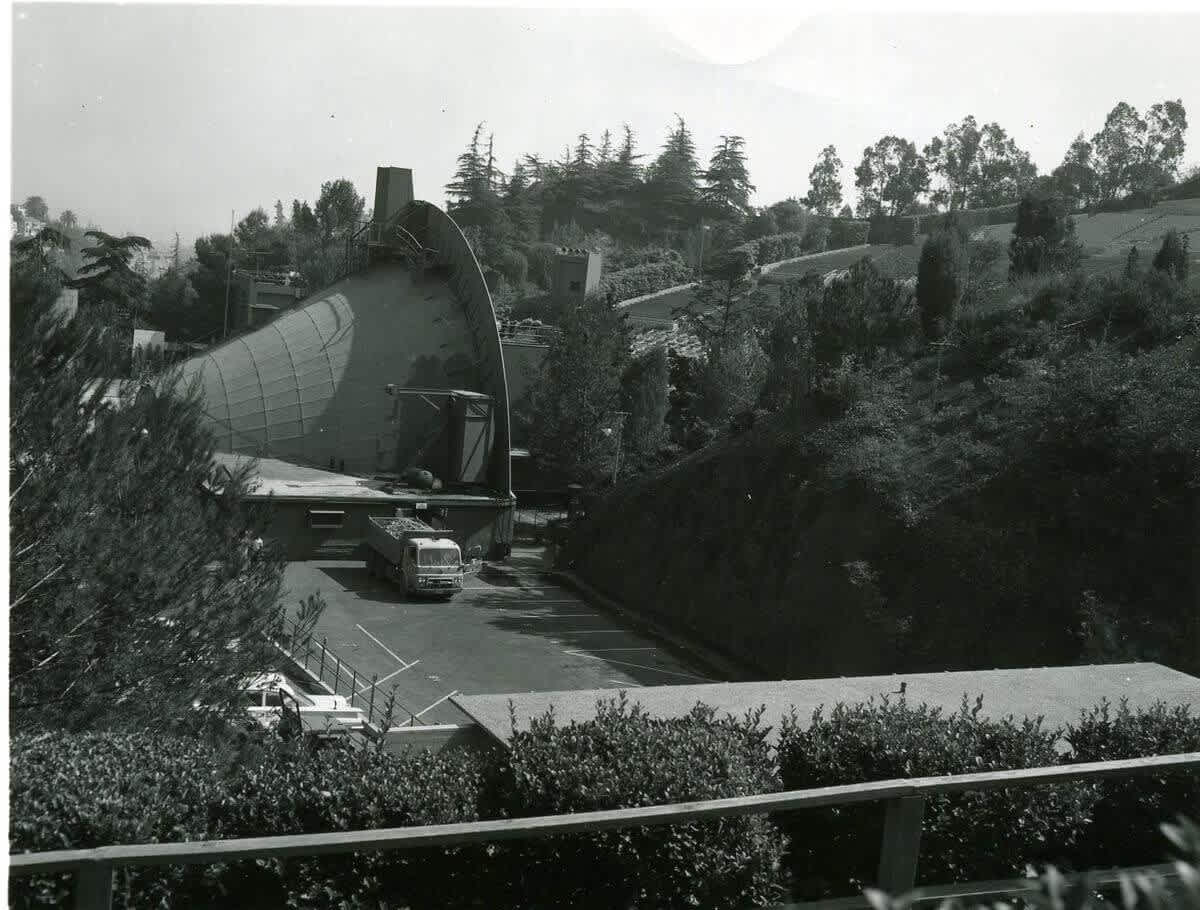
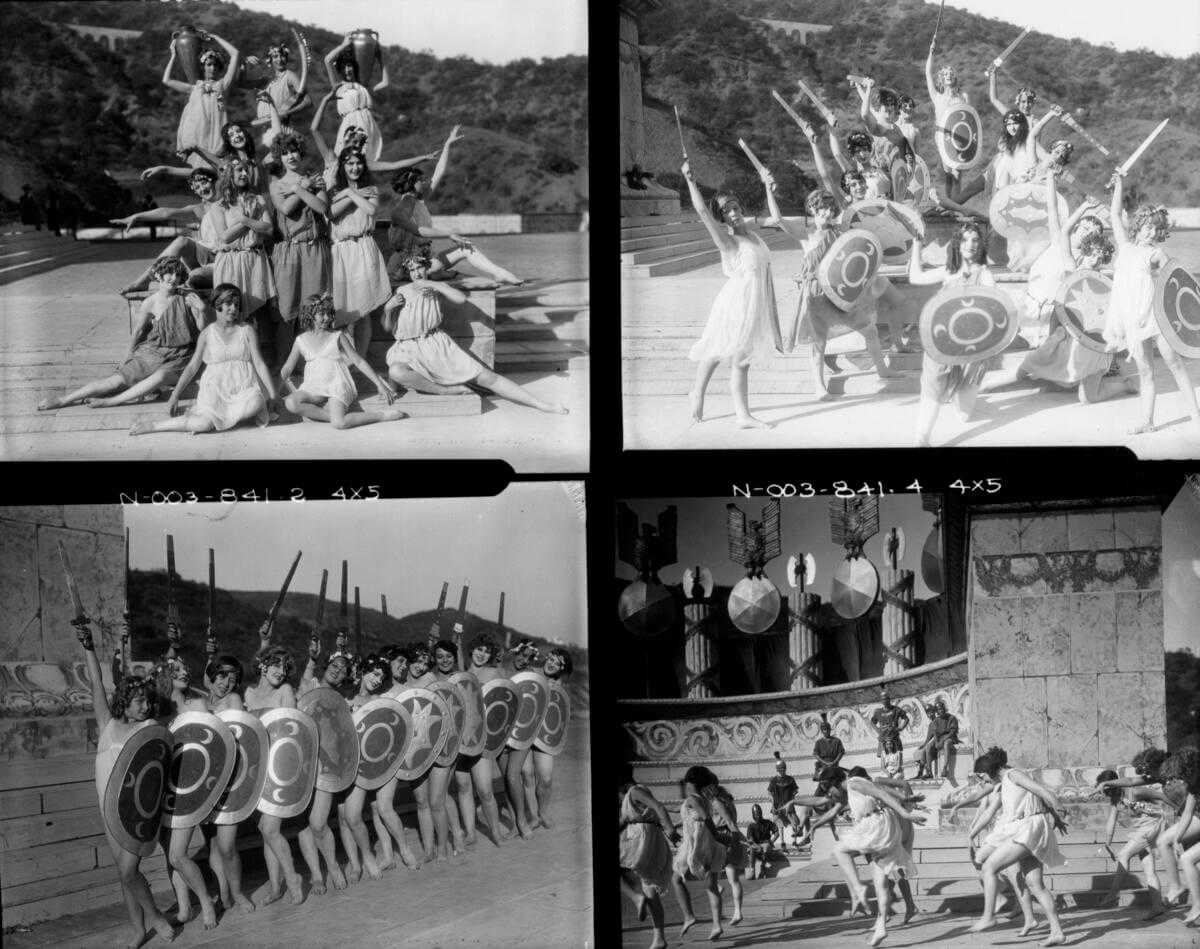
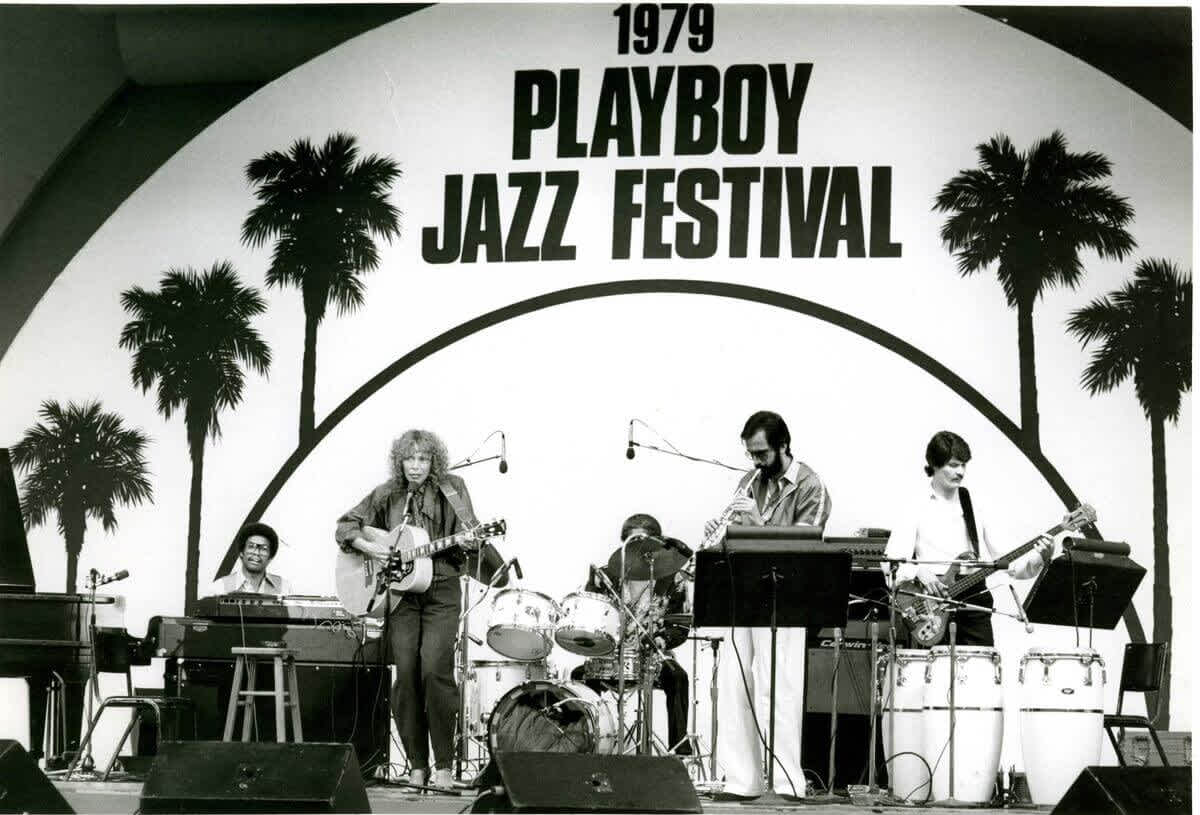
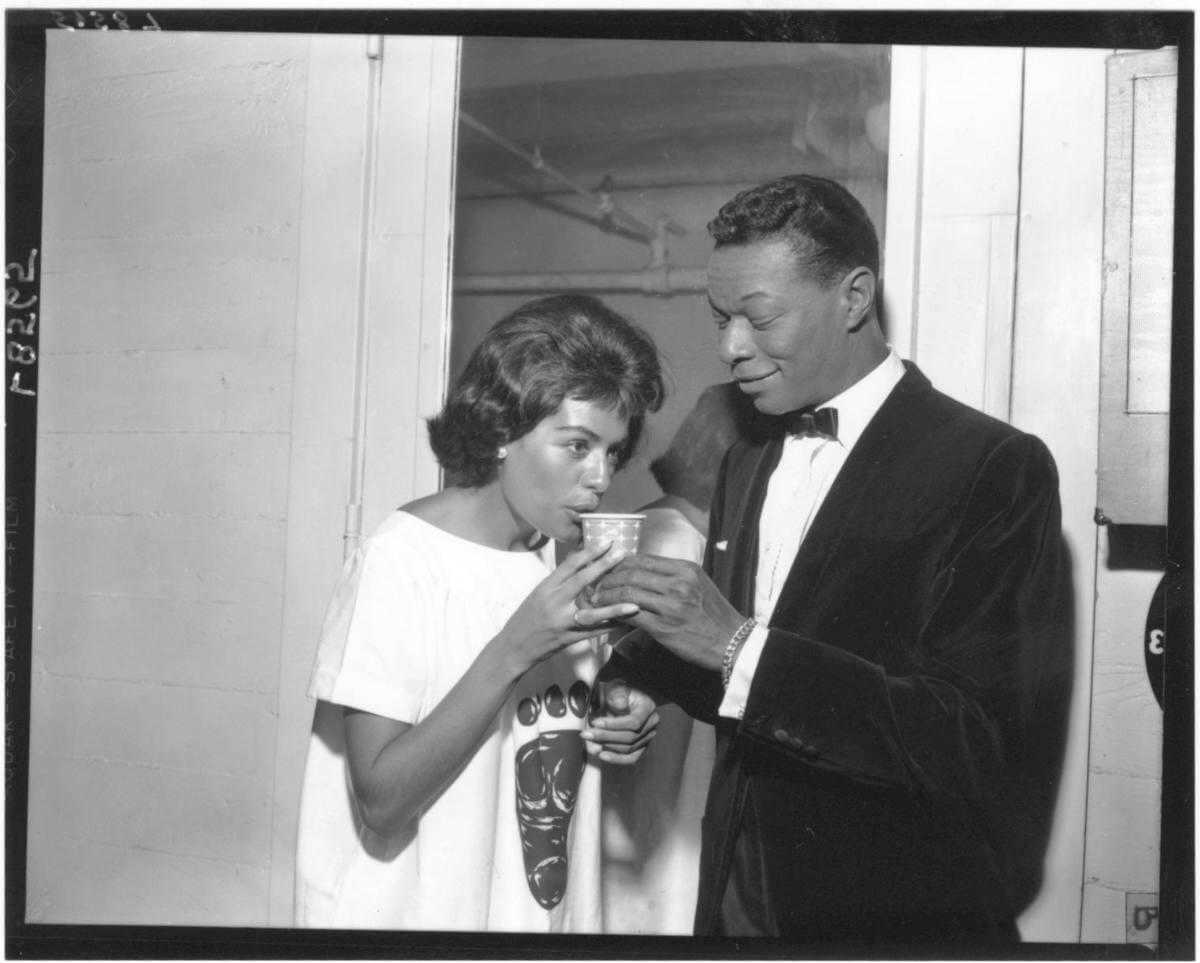
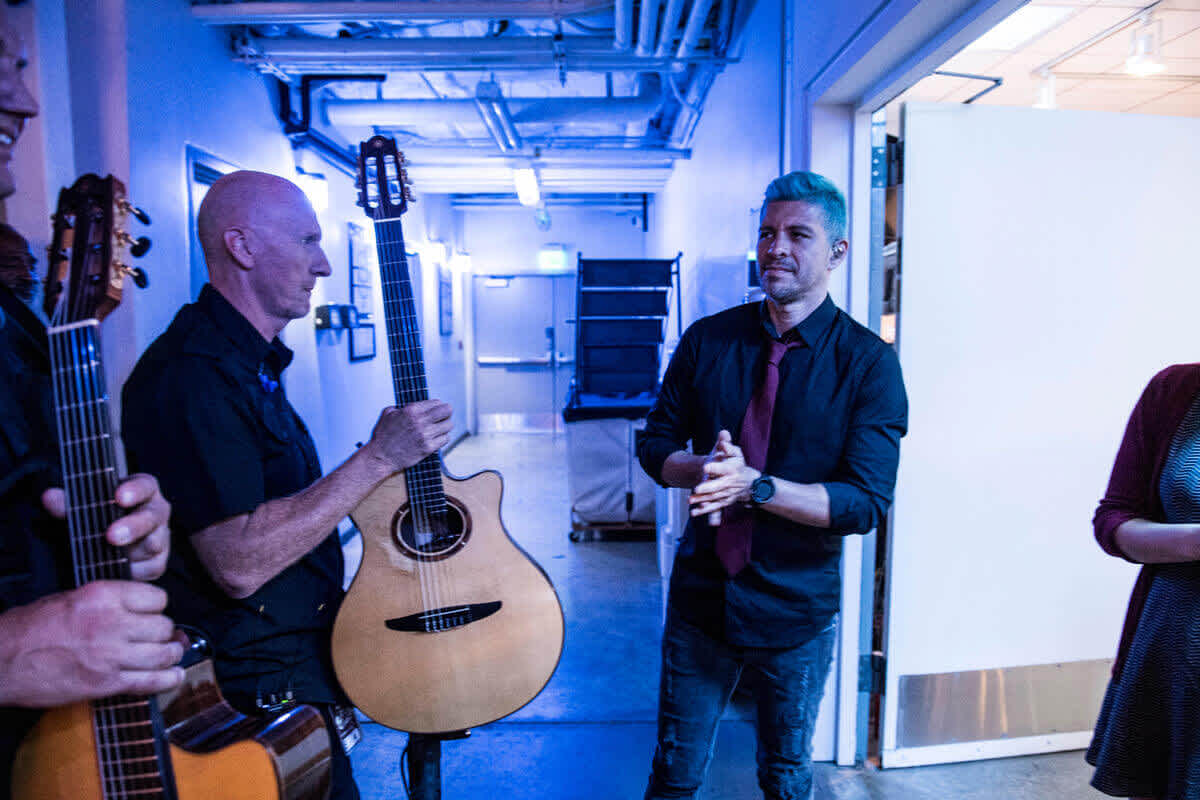
Music and Artistic Director Gustavo Dudamel headed backstage
Photo Credit
Los Angeles Philharmonic
Hollywood Bowl shell pulled into the side backstage parking area by a weighted truck, 1962.
Photo Credit
Photo by Otto Rothschild courtesy of The Music Center
Dancers for an epic 1926 production of Shakespeare’s Julius Caesar
Photo Credit
Security Pacific National Bank Collection/Los Angeles Public Library
Joni Mitchell and Herbie Hancock perform at Playboy Jazz Festival, 1979
Photo Credit
Los Angeles Philharmonic Archives
Nat King Cole and Barbara McNair backstage at the Bowl
Photo Credit
Photo by Otto Rothschild Courtesy of The Music Center
Rodrigo Sánchez of the duo Rodrigo y Gabriela backstage during his 2018 concert
Photo Credit
Timothy Norris
1/6
Have you ever been backstage at the Hollywood Bowl? It’s kind of a trick question because there isn’t really a backstage. When you open the door at the back of the shell, it opens right up onto the parking lot. This is great for making a fast getaway after a show, but not so great for when you are staging a musical or a spectacle-heavy rock concert.
There are stage left and stage right wings and some cavernous spaces under the stage for dressing rooms, storage, and offices. These were expanded when the shell was rebuilt in 2004. Private spaces at the Bowl remain minuscule compared to the size of the venue. But, when I talked to the orchestra members, guest artists, and conductors who regularly play the Bowl, I didn’t ever hear any complaints. The way the Bowl throws every person (and every animal) together is more of a feature than a bug.
They used to call it the “breezeway”—the walkway behind the old shell, where musicians would gather before and after performances. Former LA Phil Librarian Kazue McGregor told me: “It was a really breezy breezeway.” It was a completely open walkway, with a men’s area on one side and women’s on the other—both with tiny portable toilets. LA Phil violist Meredith Snow said it was like camping.
Eventually they added a wooden terrace, a latticework structure that had the benefit of providing shade during daytime rehearsals but the drawback of providing a nesting place for local wildlife. McGregor recalled one rehearsal in the 1980s, when she watched from her desk just off-stage, as the entire orchestra walked under a swinging raccoon tail, dangling just above the doorway. Former Bowl President Gail Samuel remembered when a bird made a nest in the Bowl’s rafters. During rehearsal, an egg fell splat onto one of the timpani drums.
Though the 2004 shell remodel ended the breezeway / camping era at the Bowl, the backstage spaces remain an incredibly tight fit. In pre-COVID times, artists, guests, and staff would all have to bob and weave, as they navigated the narrow hallway outside the conductor’s dressing room.
But the closeness is part of the Bowl’s charm and magic—it throws together people from all backgrounds. Thomas Wilkins, the Hollywood Bowl Orchestra’s Principal Conductor, recalled walking off stage after conducting the Sacrificial Dance from The Rite of Spring. Stevie Wonder was there waiting for him. Wonder grabbed his arm and said “Man, that Stravinsky was rocking!”
The 2004 shell added a ton of possibilities—high-tech lighting, pristine sound, and a 30% larger performance space. But it lacked one feature that the previous shell had—
For most of the 20th century, the Bowl’s shell was mobile. It was mounted on railroad tracks and could be slid off to stage right to accommodate large-scale spectacles. With the shell off to the side, the backstage, such as it was, disappeared. The entire hillside would dissolve into the performance space.
In 1926, the Hollywood Hills became the seven hills of Rome for a staged production of Shakespeare’s Julius Caesar—a cast of 900 included armies marching and doing combat on larger-than-life sized bridges and arches built into the canyon. In 1936, Max Reinhardt staged a famed production of A Midsummer Night’s Dream, in which 250,000 twinkling lights were strung from the sky and a 350-foot bridge was extended from the mountains down to the stage. They brought in 11 full-sized oak trees to recreate the forest outside Athens. In 1938, a performance of the Ride of the Valkyries featured women riding horses down the mountain holding giant torches above their heads.
While today’s shell doesn’t slide, it does spin, which helps make up for not having a true backstage. For shows like the Hollywood Bowl Jazz Festival, that require quick act changes, the stage can be spun around, so one band can be loaded in on one side, while there’s another act performing on the other. On rare occasions, artists have outstayed their welcomes and needed to be literally “spun off.” Who has been given the hook? They won’t tell me. And believe me, I’ve asked. Mostly the turntable stage creates a joyous, flowing atmosphere that keeps audiences entranced for hours and hours of jazz music over two days every June.
The Jazz Festival, of course, pre-dates the spinning stage. It began in 1979 when impresario George Wein and publisher Hugh Hefner launched the event, as an experiment. Jazz had been underperforming at the Bowl for years, being out-sold 2-to-1 by rock and pop shows. But attendance at the first iteration of the Festival in ’79 was more than 28,000 over two days. Wein said the Bowl Jazz Festival proved that there was an audience—a large audience—for jazz in Los Angeles. He gave credit to the mystique of the Bowl itself, claiming that if he put the same concert on at another Los Angeles venue, it would draw less than half of what it would at the Bowl.
Singer Dianne Reeves—who has performed at the Bowl countless times—witnessed what she described as one of the formative moments of her education at the Jazz Festival in the 1980s. Standing in the wings, Reeves watched as singer Sarah Vaughan took the stage following a rocking set from jazz-fusion group Spyro Gyra, that had left the audience abuzz and boisterous. Reeves wondered how Vaughan was going to get the crowd under control. Vaughan started singing “Summertime,” but instead of trying to overpower them with her voice, she sang softly, barely above a whisper. Slowly the audience quieted down so they could hear her, and Vaughan responded by getting louder and louder until she was belting Ira Gershwin’s lyrics. When I interviewed her, Reeves told me it was one of the most important lessons she’d ever learned.
I personally have learned some important lessons backstage at the Bowl. And I’ve never told anyone this before, but in 2011, the first summer I worked there, toward the end of a concert, I was leaving early through backstage, trying to get to the parking lot. I went out the exact wrong door at the exact wrong time, and I ended up standing directly under the fireworks show. I put my hands over my head and bolted as fast as I could, as hot fireworks shells started falling all around me. I made it out unscathed, but I had learned a timeless lesson—there really isn’t a backstage at the Hollywood Bowl.

0:00
0:00
